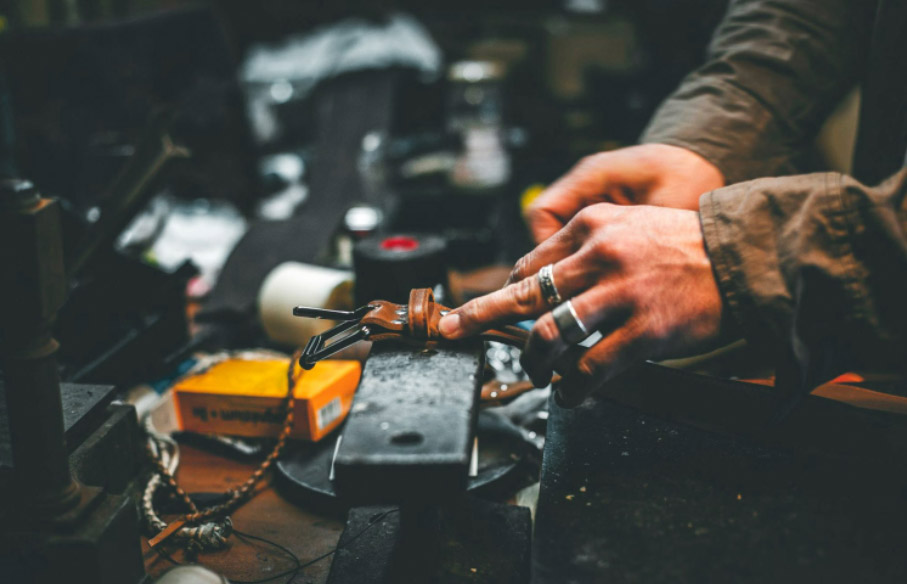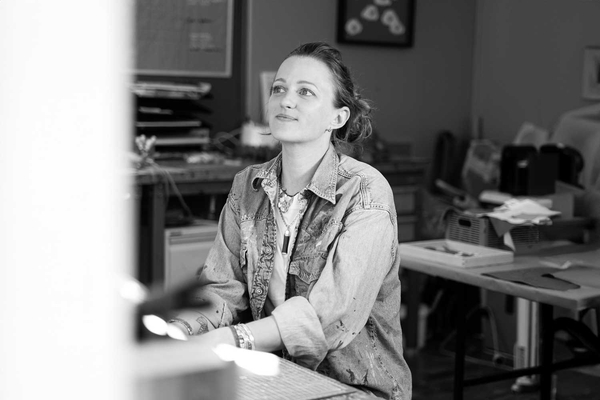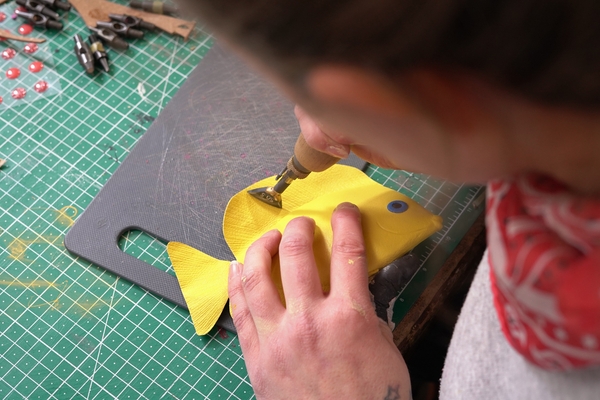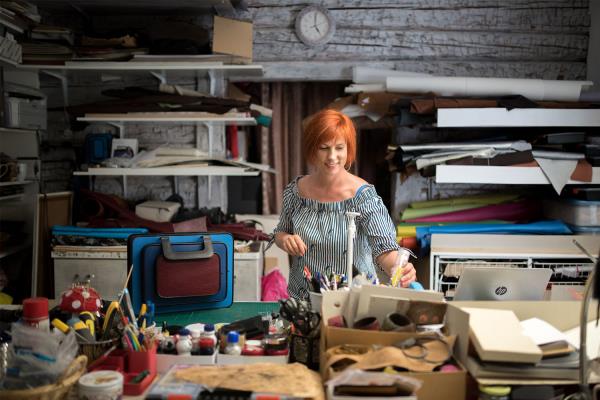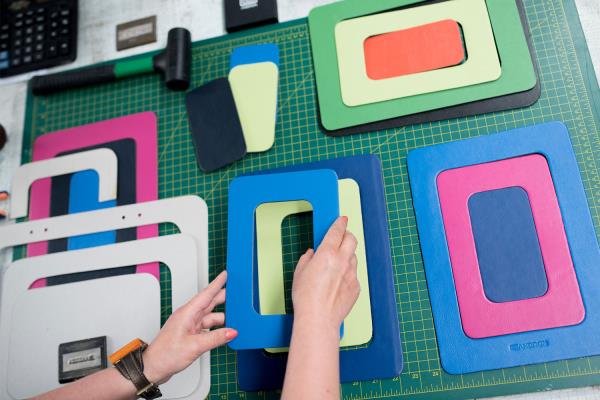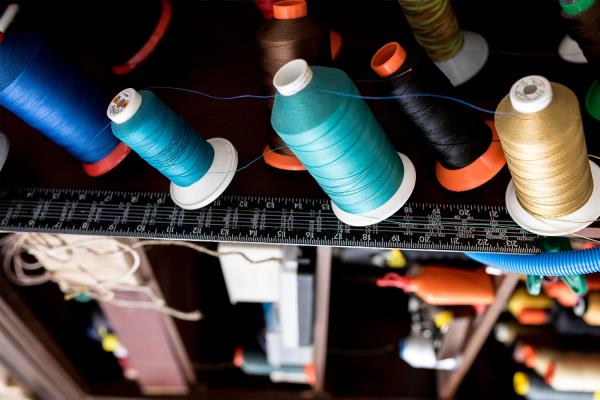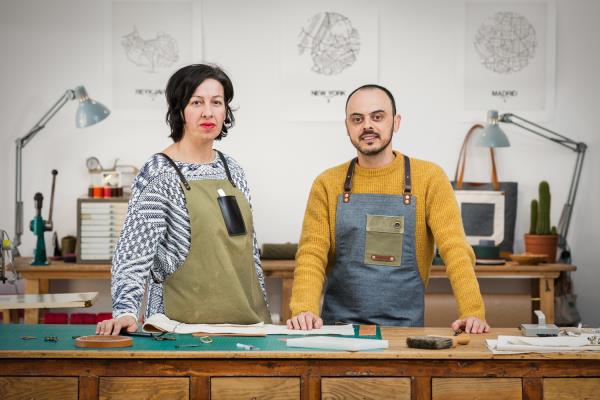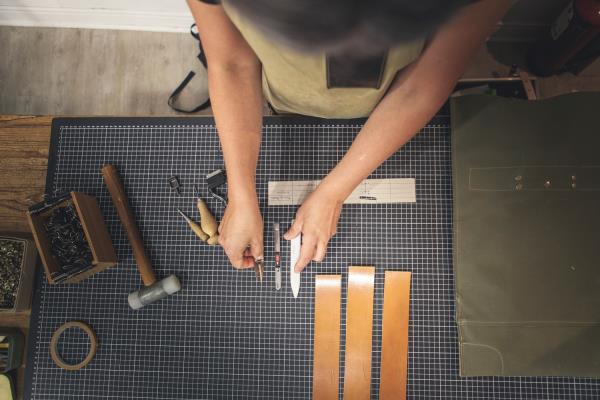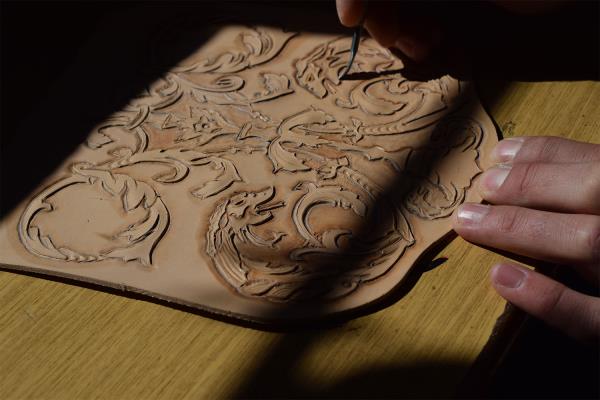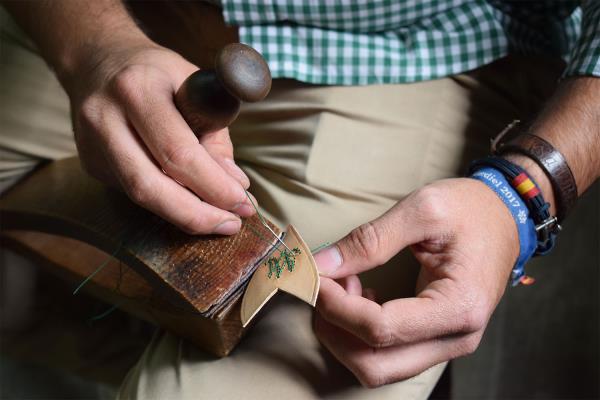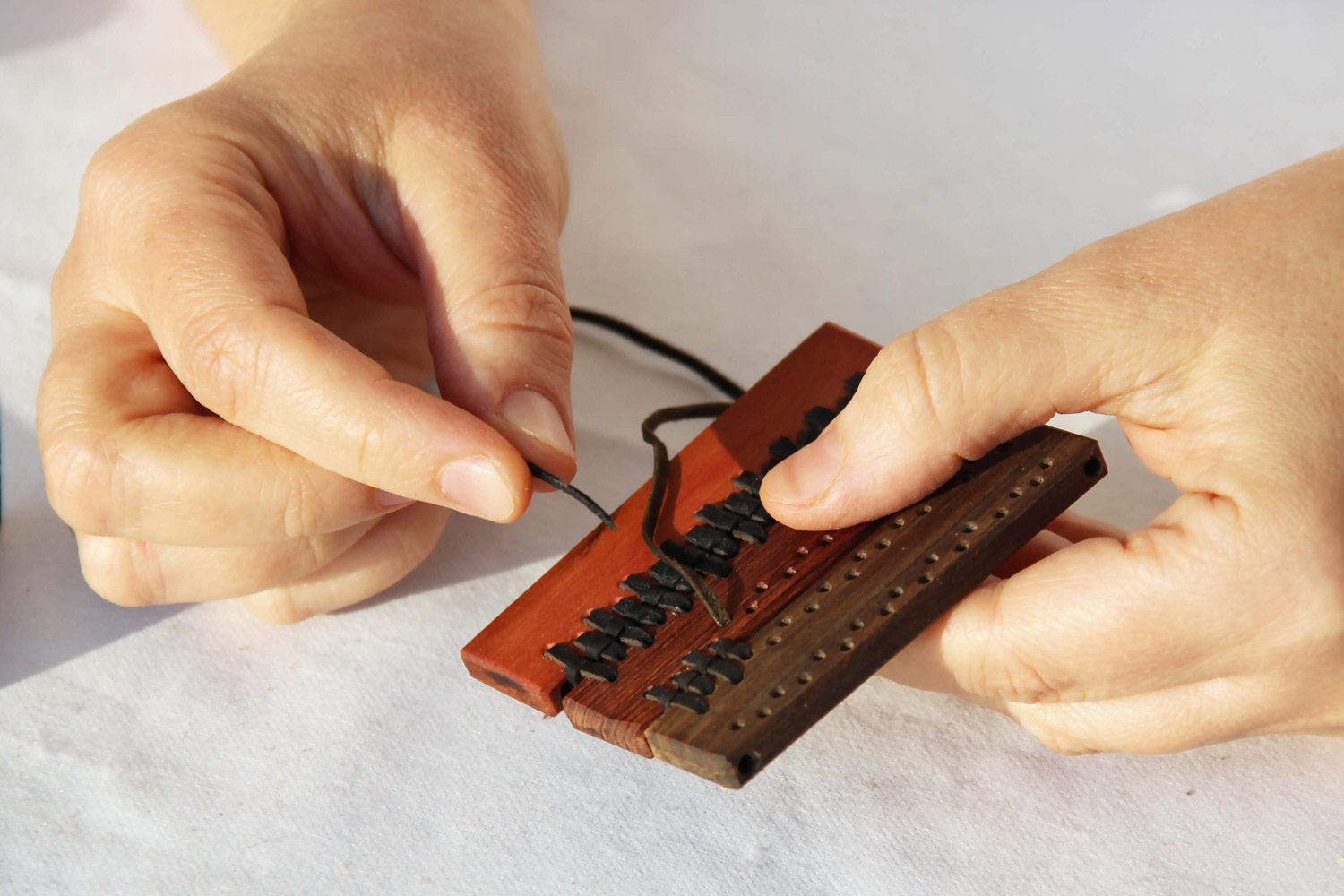
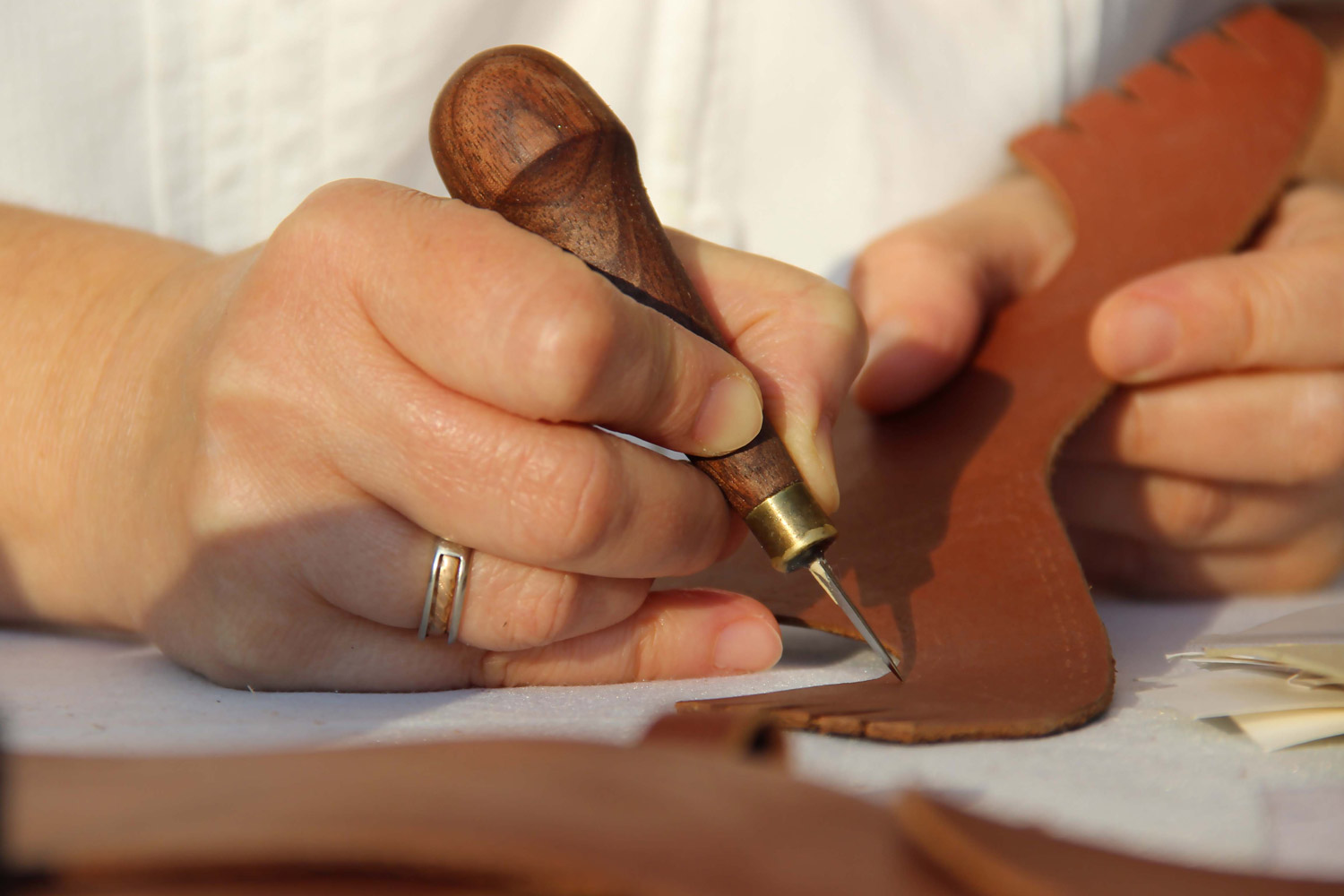
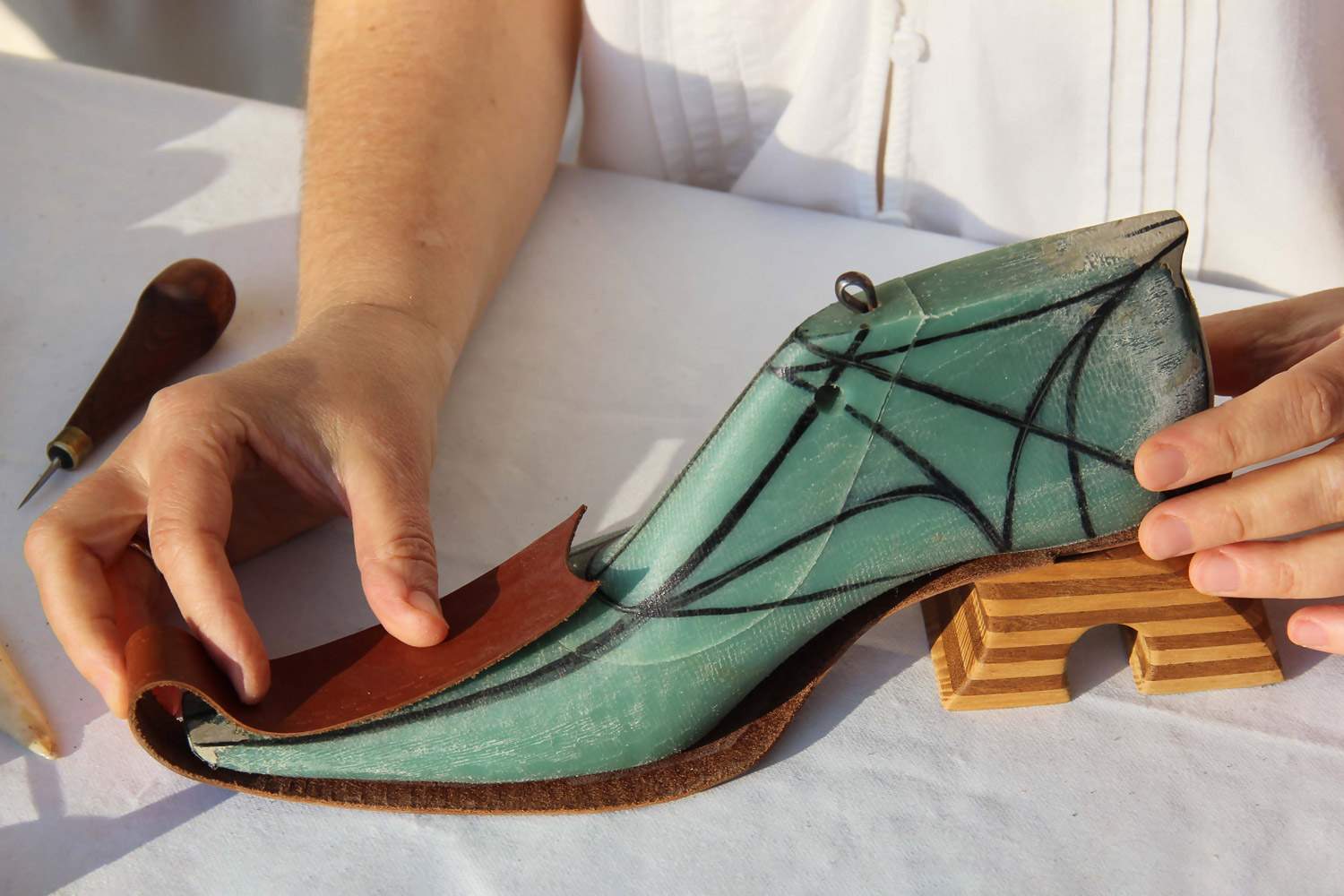
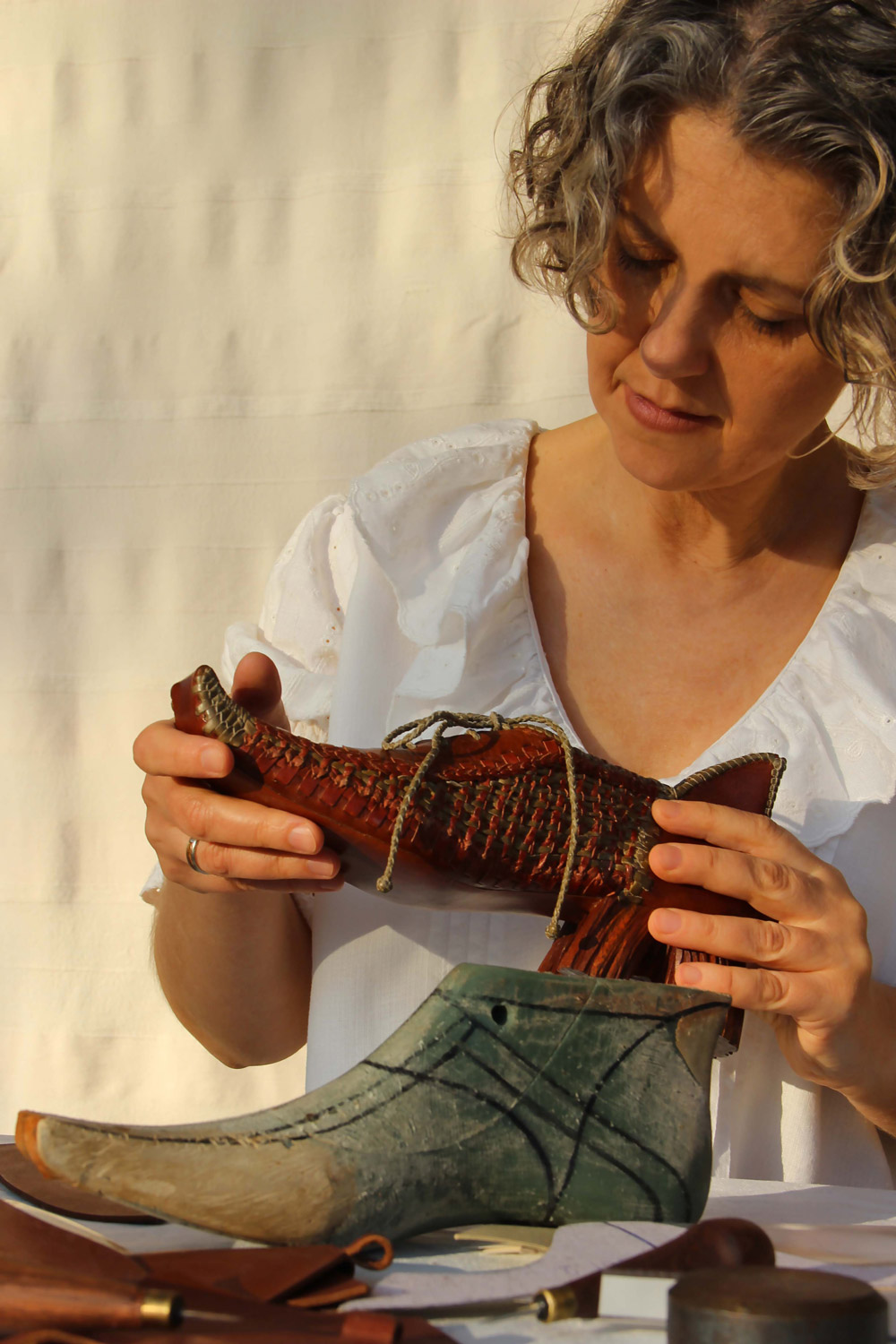




Lacing leather
- Judit has developed two leather lacing techniques
- She is interested in ancient cultures
- Her work mostly uses two natural materials: wood and leather
Judit Pinviczki's leatherwork contains many layers of meaning. She is immersed in traditional techniques, and combines her creativity with her deep knowledge and respect for ancient cultures. The two types of techniques she has developed are based on years of research, studying the use of the material on several continents: it is tied with a thousand threads to craft traditions. Her pieces are unique and unforgettable. She sources only the best materials. For Judit, leather design is a meticulous job. Fewer and fewer young people are working in the field of leather – so she supports emerging young talent as she is determined that her craft survives.
Interview


- Why did you start crafting with leather?
- I have always been creative, but I was attracted to making useful objects more than creating fine art pieces. I chose leather because I saw a lot of opportunities in it. You can make a wide variety of objects, from shoes to clothing, from book covers to furniture.
- What unusual techniques do you use?
- I use two types of lacing techniques. Firstly, I developed a technique that results in "leather web”, useful for making decorative surfaces. It resembles weaving and it is similar to the ancient methods used in saddlery. The other lacing technique is drawn from the indigenous people of Japan, the Ainu, who use it mainly in raft making.
- Where do you get your inspiration from?
- I am an experimental and romantic figure. I research the spiritual values of ancient cultures, study their material memories. I love traditionally and artistically made objects, including buildings, sculptures or paintings.
- Is your activity related to a local tradition?
- I consider the connection to local traditions to be very important, as the future is nourished by the past. Hungarians have a rich tradition that must be preserved, but we can also use it to inspire our creativity. One of my lacing techniques is based on the traditional Hungarian saddlery (horse tack).
Judit Pinviczki is a master artisan: she began her career in 1997 and she started teaching in 2005
Where
Judit Pinviczki
Find Judit Pinviczki in the itinerary

